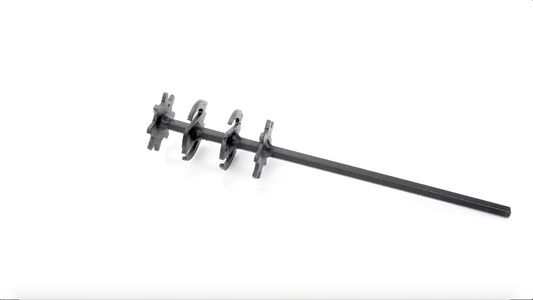As a hunter or wildlife enthusiast, planting a food plot is a must-have. These areas, full of grasses and seeds like forage oats, clover, rape, and chicory, can attract wild game like deer and turkeys. While establishing a food plot is a fairly simple process, there are some steps you can take to ensure success, especially if you're planting for the first time in the Midwest.
Step 1: Choose the Right Location and Seed
The first step is to choose a spot for your food plot where wildlife is active. Look for wildlife clues like deer trails, deer bedding areas, places where turkeys roost, or near water sources. Plot location also helps determine which type of forage seed to plant. Small-seeded forages perform best when the seedbed can be tilled over. But some food plots are so remote that tillage equipment can’t be used. In that case, choose a quality No-Till blend, which doesn’t have to be tilled into the soil.
Step 2: Test the Soil
Before planting, it's crucial to test the soil pH. Forage seeds have a harder time absorbing nutrients in acidic soil, which can hinder growth. Testing the soil pH can help you correct any soil issues before planting. You can purchase soil test kits at most agricultural stores or contact your local county extension for assistance.
Step 3: Clear and Prep the Soil
Two weeks before planting, clear the area of any grass and weeds by hand trimming and mowing. Use a non-residual grass and weed killer, such as Concentrate Grass & Weed Killer with 41% glyphosate, to kill any unwanted plants. Once the vegetation is brown, till the plot, working the dead vegetation back into the soil to add organic matter.
Step 4: Plant and Fertilize
After clearing and prepping the soil, it's time to plant. Use a handheld or pull-type spreader, depending on the size of your plot, to distribute the seeds. After planting, work the soil lightly with a rake or pull a board across the surface to cover the seed. Fertilize with a 13-13-13 mix of nitrogen, phosphorus, and potassium, or use the recommended fertilizer for your soil type based on the soil test results.
Step 5: Maintain Your Plot
Once your food plot is established, it's essential to maintain it. Apply a second application of nitrogen fertilizer to boost forage yields and make your food plot more palatable to wildlife. Control any weeds and monitor the plot's success by tracking wildlife activity and plant growth.
Creating a successful food plot takes some planning and preparation, but the rewards are well worth the effort. By following these five steps, you can attract more wildlife to your property and enjoy a more successful hunting season.
In the Midwest, there are several things you need to consider to make sure your first-time food plot is successful. One crucial factor is the timing of planting, which typically occurs in the spring or fall. Another factor is the type of seed and location you choose. Look for areas where wildlife is active, such as deer trails or bedding areas, and select a seed that performs best for your specific soil and climate.
Testing the soil is essential before planting, as it can help you correct any issues and ensure optimal growth for your chosen seed. Clearing and prepping the soil is also crucial, as it allows the seed to have better contact with the soil and increases the soil's ability to hold moisture.
Once planted, it's important to monitor the plot's success and maintain it by controlling weeds and applying the appropriate fertilizer. By taking these steps, you can establish a thriving food plot that attracts more wildlife




